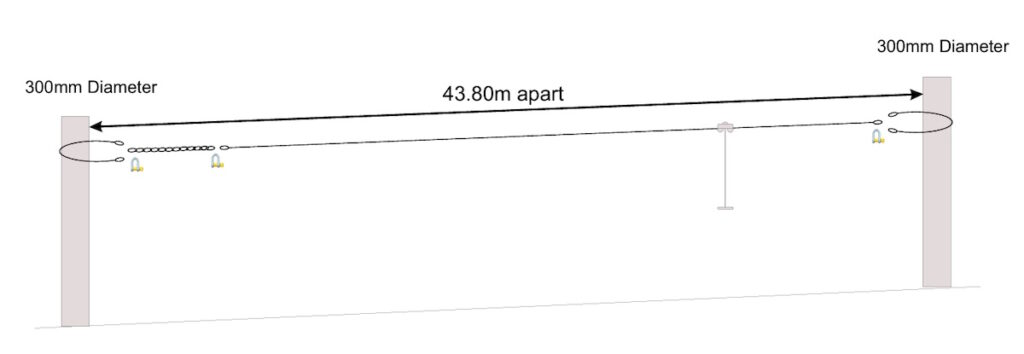A Zip Line makes you measurably cooler… First of all, when well-built (and thought through) they are marvelous, thrilling, and at times – incredibly useful. Secondly, when shoddily constructed or poorly thought out, they can be a liability that can border on lethal. So let’s assume that you want to build something safe for both the users of the Zip Line, the environment, and attached structural points.
Background: Strength wise, we recommend the 8mm Wire Rope without hesitation – even for the odd very fat drunk adult (although I would NOT recommend the latter for other reasons…) With even with the most conservative safety factor (10X) applied to the certified MBS of each wire (43.0kN for 8mm and 68.7kN for 10mm), the recommended Safe Working Loads in your application are:
- 219.2kg (static load) for 8.0mm G2070 7×19 WSC Galvanised Wire Rope
- 350.3kg (static load) for 10.0mm G2070 7×19 WSC Galvanised Wire Rope
75M (or even 175M) is not really relevant in this type of application (except for the weight of the wire itself…). What is important to remember is that any load applied vertically to a horizontal wire (pretty much the scenario of a Zip Line) translates to horizontal force (on the anchors) of twice the vertical load.
So in practical terms – if my 200kg Fat Aunt Martha sits on the zipline after two chardies, then my attachment points had better be able to stand up to an instantaneous dynamic load of ~400kg…
In conclusion, 10mm wire is certainly stronger and if the rest of your structure is adequate, then it is arguably safer. Just please remember that in EVERY structure there will be ‘the weakest link’. Zip lines are no exception. Generally, that link and the potential failure mechanism of the structure should be understood and planned for in advance of deployment.

Application: Lets suppose you have an ~44M distance, then a recommended wire set up is
- Main Line of 42M of 8mm 7×19 G2070 Galvanised Wire Rope – with a hard eye on each end.
- Slings to wrap around your top and bottom anchor points that is ~ 15% longer than the anchor’s circumference (in this case 300mm diameter = ~ 94cm circ x 1.15 = 108cm – so call it a 1M sling
- If is solid, then wire rope sling for durability – but
- if its a tree, we recommend a synthetic round sling
- ~3M of 8.0mm Long Link Trailer Chain to give you length adjustment
- 3 Quicklinks to connect
- Top sling to main line
- Main Line to chain
- Chain to Bottom Sling
Other bits that you may want to acquire include:
- a way to negatively accelerate the passenger before they hit the bottom anchor point – springs or a collection of old car tires.
- a trolley pulley -with handlebars and IDEALLY a dead man’s brake so that if someone freaks out and lets go – the trolley is effectively braked
- a full body harness for people who get freaked out and let go, and
- a good insurance policy.
Adventure Developments is a good place to check for a complete kit